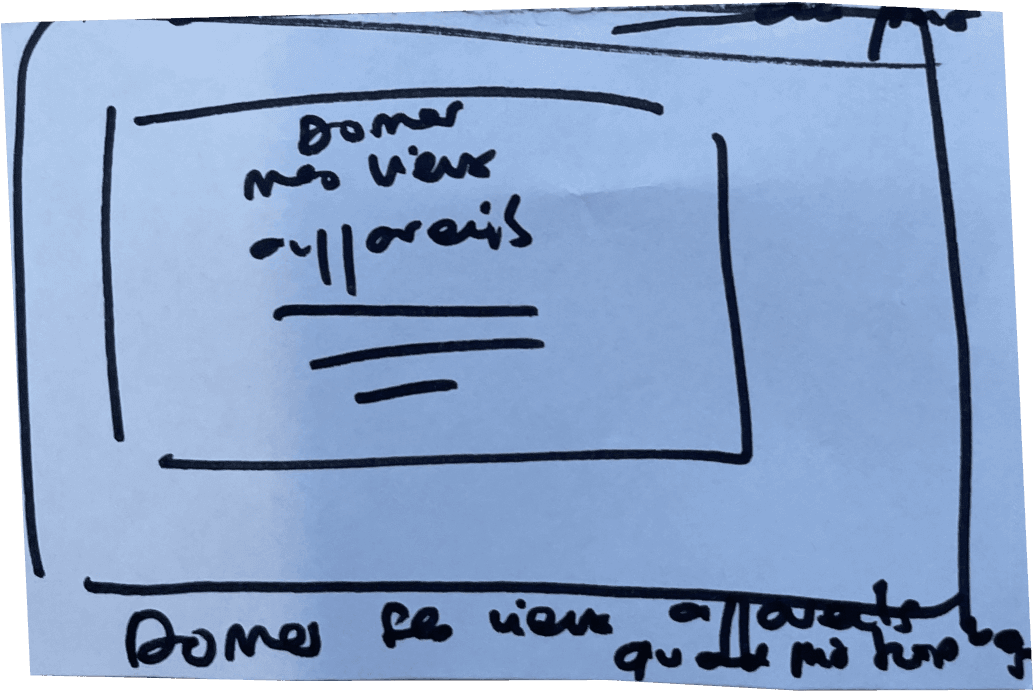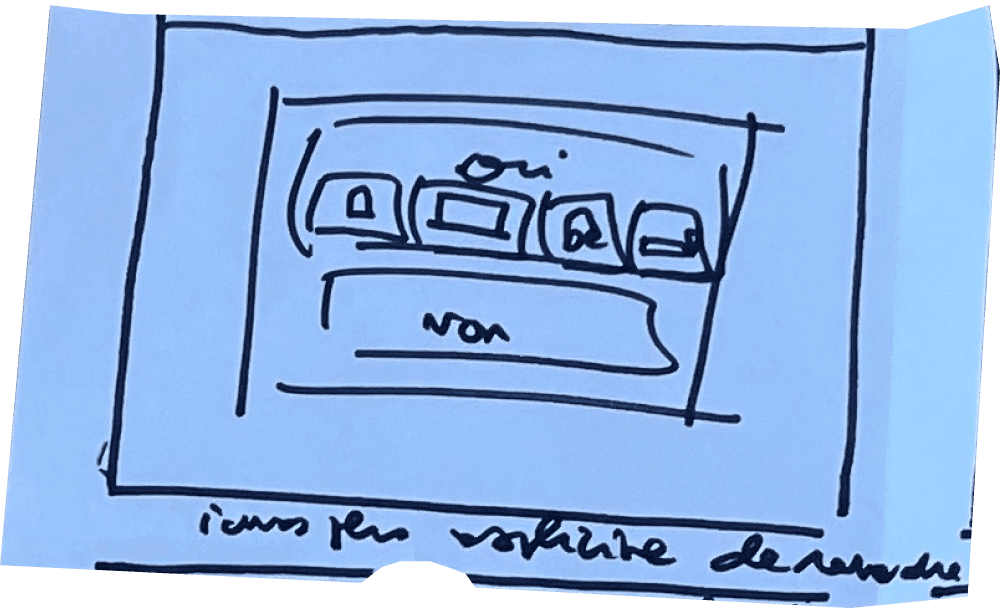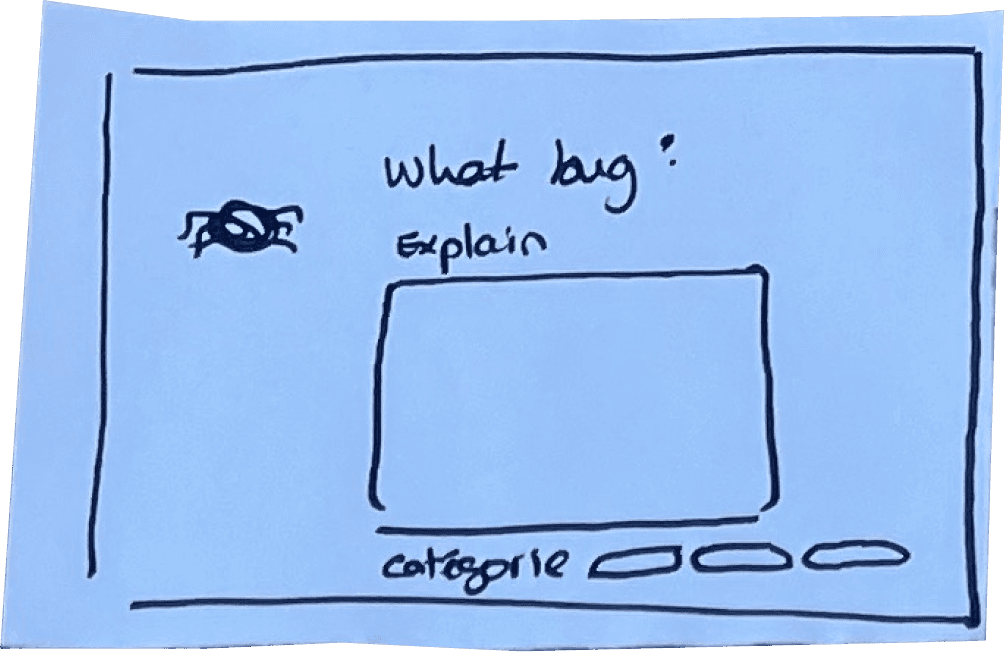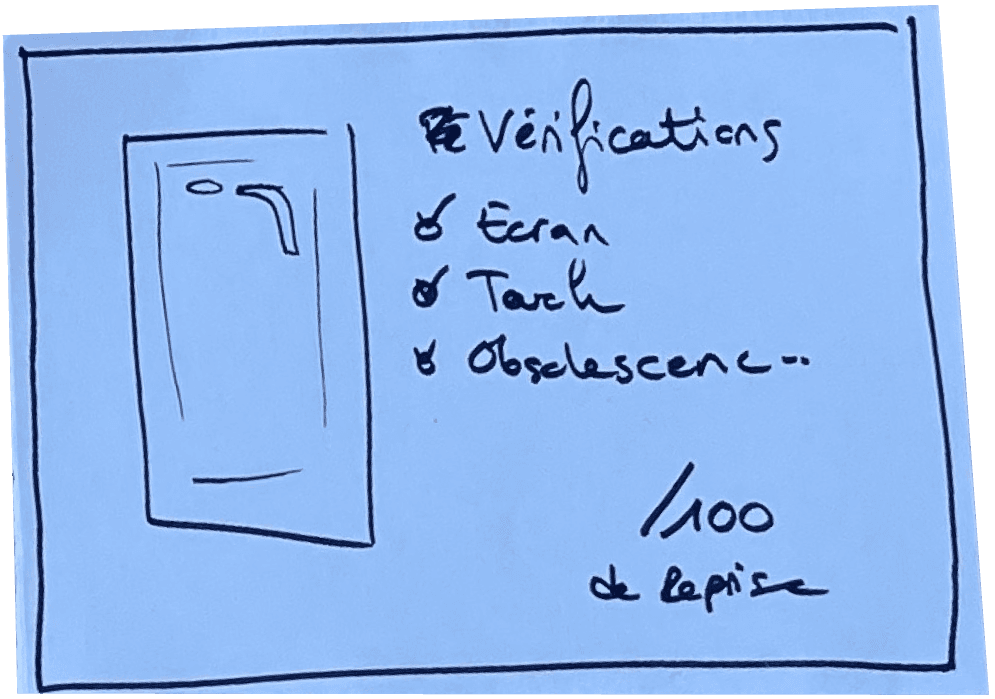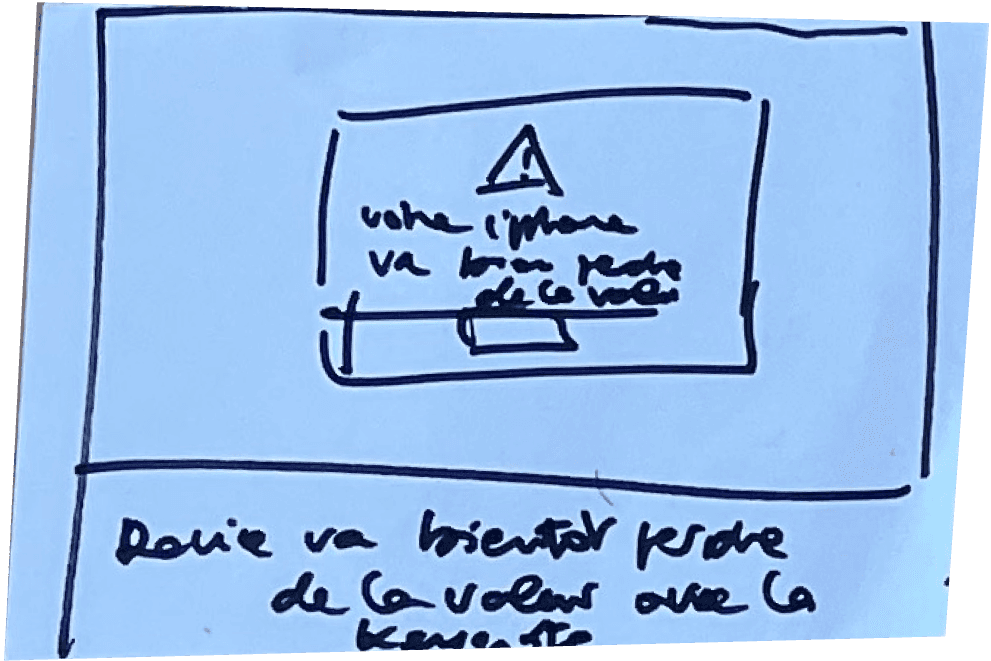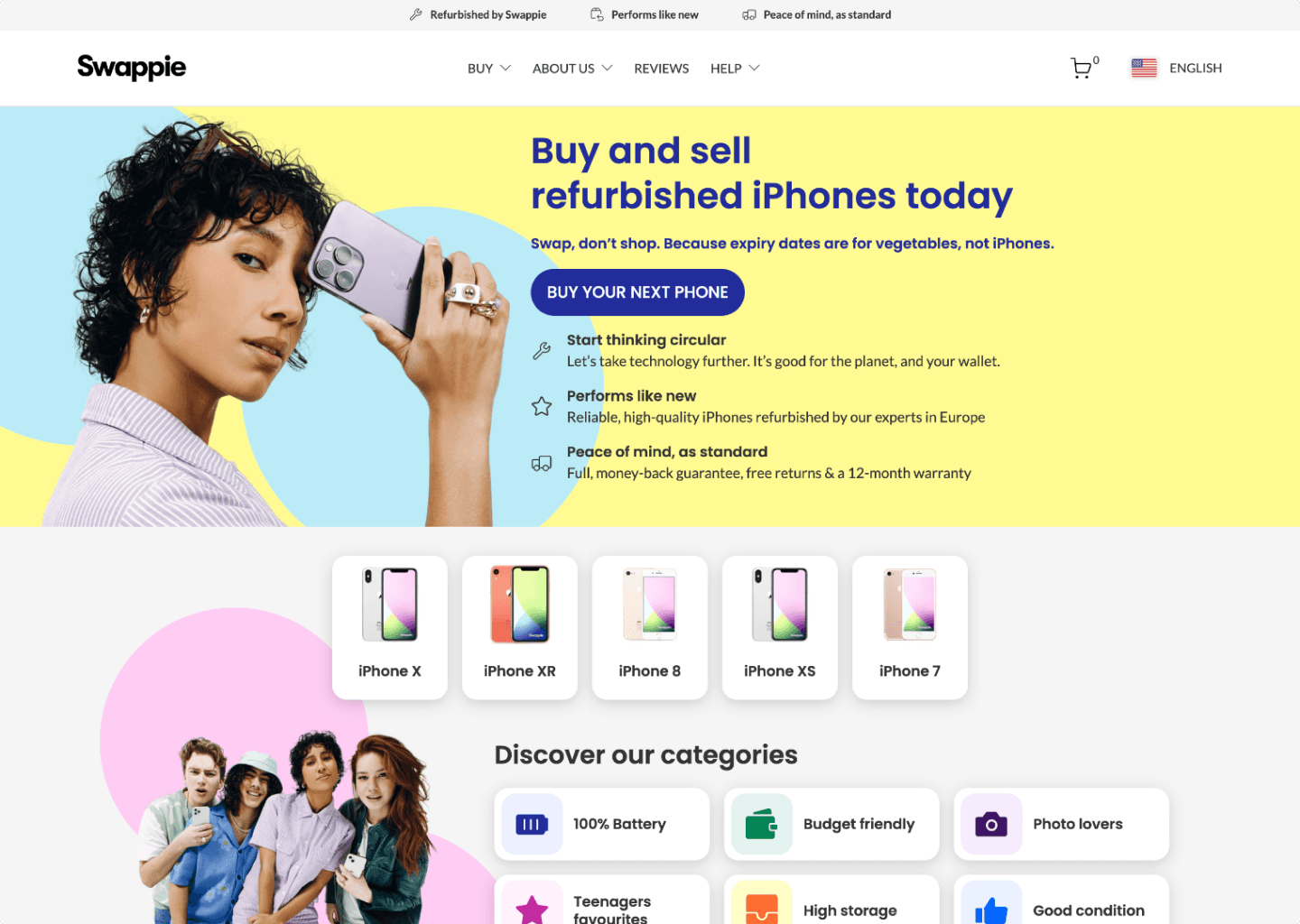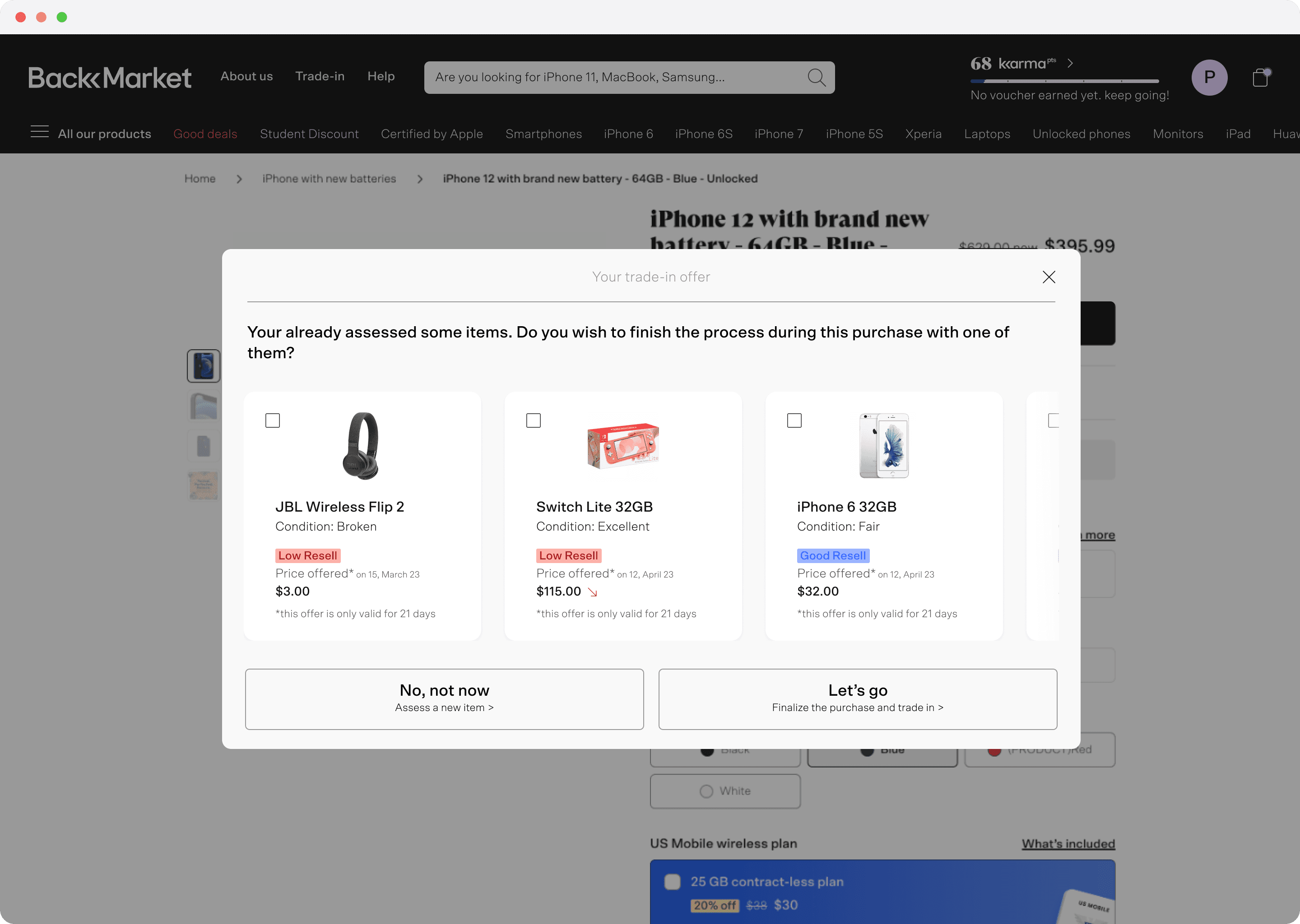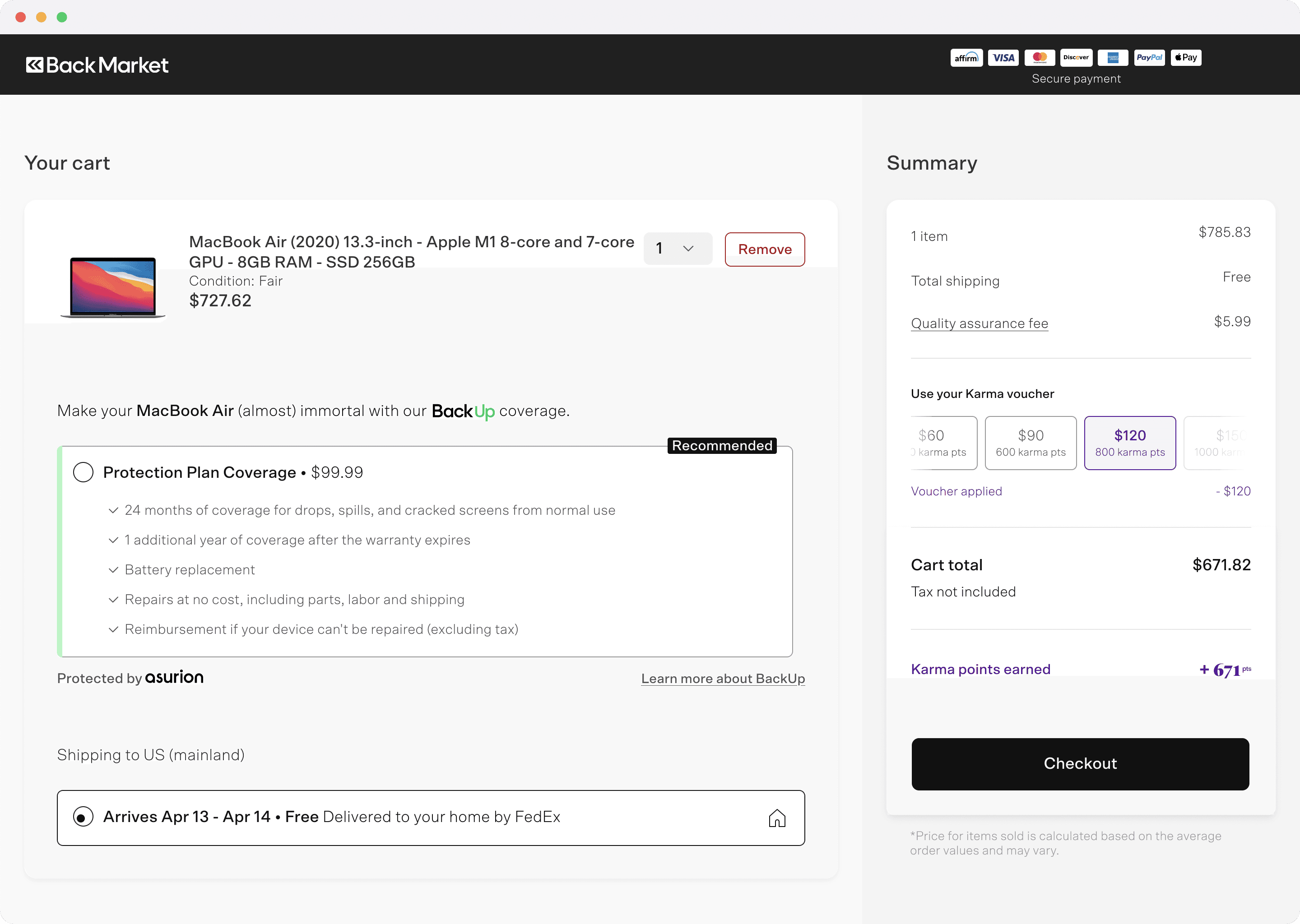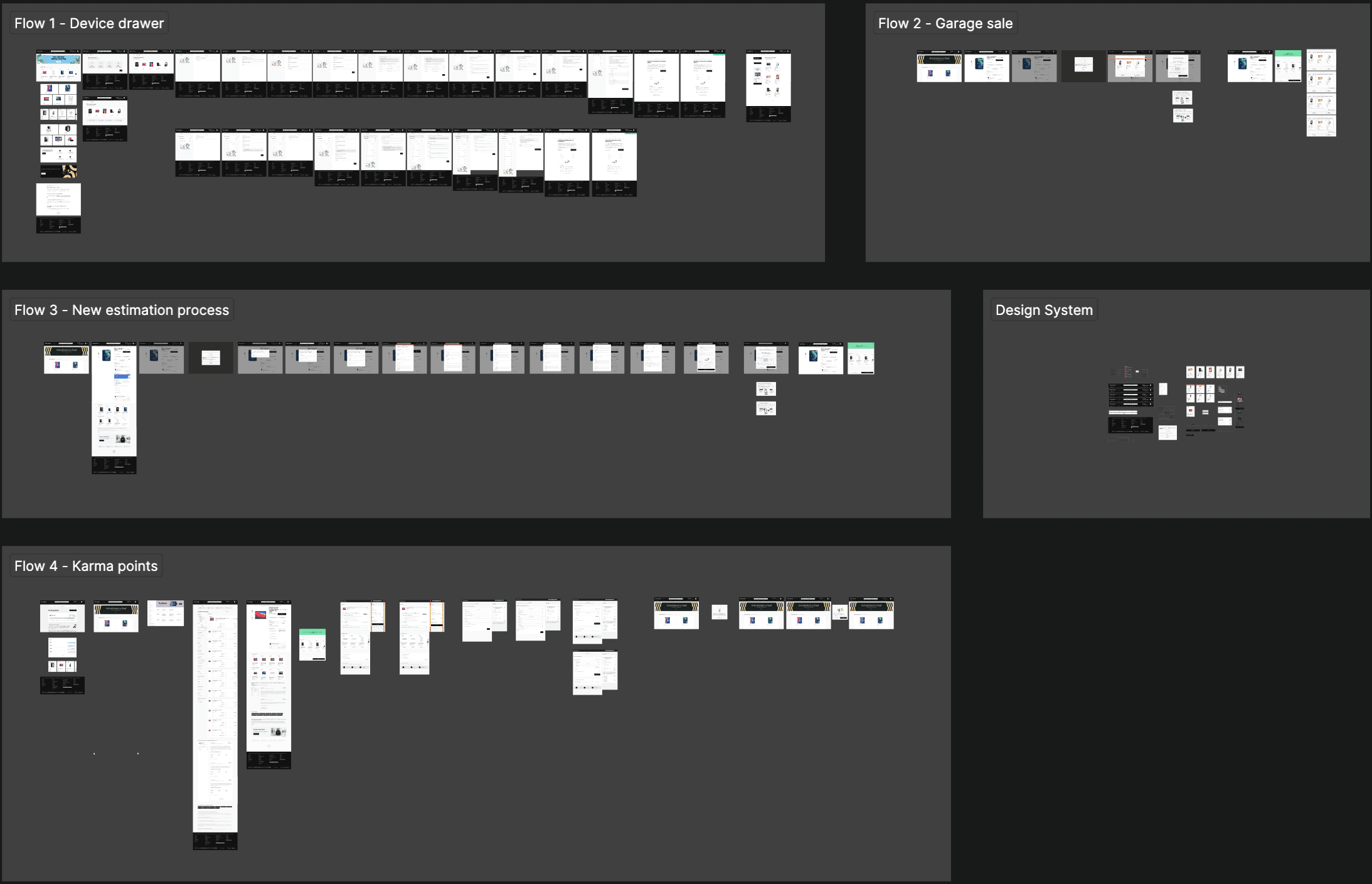ROLE
Product Designer
TIMELINE
2 weeks (2023)
SCOPE
Discovery + Delivery
TOOLS
Figma, Notion, Google suite
CONTEXT
What is BackMarket ?
Why did I choose this project?
In the context of my Product Design bootcamp with the Design Crew, Product Designers at BackMarket came to pitch us a real-life problem they are currently facing.
They observed that most of their customers are still reluctant to sell their old devices. Despite most of them not having use for them any more.
ROADMAP
1.
User research
Understanding the habits, motivations and opinions of our users.
2.
Benchmark
Getting inspired by competing and related services.
3.
Ideation
Generating many ideas and choosing the best ones.
4.
Prototyping
It's time for our solutions to come to life.
5.
User tests
Getting feedback from our users on our solutions.
6.
Iterations
Fixing the issues and preparing for handoff.

About my role
'I was involved in every step of the design process, with a particular focus on user research, ideation and UI design.'
USER RESEARCH
To better understand the problem we are trying to solve and the motivations of our users, we conducted qualitative user research.
Objectives
Habits and motivations
Understanding the consumption habits and motivations of our panel of users regarding tech devices.
Experience on BackMarket
Understanding their experience on BackMarket and the factors that determine whether to trade-in electronic devices when buying a new one.
First impressions
Check their understanding and first impressions of the trade-in process when buying a new electronic device on Back Market.
Test parameters
Semi-directive interviews
45min
Via Google Meet
3 men / 2 women
5 testers
🧠 What we learned
REVISED PROBLEM STATEMENT
How do you increase the perceived benefits of trading-in an old electronic device and make the process frictionless, to turn more BackMarket users into buyers/sellers?
Objectives:
👁️
Awareness
Increase the awareness of the BackMarket Trade-in service.
🫶
Conversion
Increase the number of users who trade-in old devices at the time of the purchase.
📍
Business
To not decrease the conversion on the purchase side.
North star metric:
🌟
Visbility
Percentage of users who resell at the time of purchase.
IDEATION
🤟 What we kept
A personal devices drawer
A loyalty program
An optimised assessment process
🗑️ What we didn't keep
BENCHMARK
In order to come up with the design of our solutions, we took inspirations from various refurbished electronic device marketplaces as well as other services with interesting features related to our project.
Whentocop?

-> A label system to know when to buy and when to sell.
Levi's

-> An effective and lightweight loyalty program with coupons.
Swappie
-> An example of a great refurbished electronic devices marketplace.
PROTOTYPING
Whenever possible, we tried to work with Figma components to make the process of iterating after the user tests much easier.
An excerpt of our Design System
The design of the BackMarket app is very mature. Overall, the current product works well, so we had to be mindful not deteriorate the current experience with our new solutions.
Our V1
A personal devices drawer
Most people have unused devices at home. A major issue we noticed during our user research is that they have no idea what those are worth and how much money it would represent bundled together.
Therefore, we created a personal drawer with live pricing for all their devices. We also added the ability to sell everything at once.
A streamlined assessment process
Most user drop-offs occur at the end of the assessment process. For instance, some might be disappointed by the price offered and others might be dettered by the shipping logistics involved.
Therefore, we added the ability to receive more context on the price being offered for their device(s) as well as new shipping options.
USER TESTS
To deliver a successful solution and create a great user experience, we performed a series of user tests.
Objectives
Device drawer
Test how easy it is to use the device drawer and whether it incentivises users to trade-in their old unused devices.
Assessment process
Test if the iterations made to the assessment process have an impact on the drop-rate of the trading-in process.
Karma points
Test if the way Karma points work is easily understood and if it really adds value for users.
Test parameters
Semi-directive interviews
30min
Via Google Meet
3 men / 2 women
5 testers
✅ What worked
⛔ What didn't work
OUR V2
Time to sit back and enjoy the show.
HANDOFF
Our figma file
NEXT STEPS
Although the tasks below exceed the scope of the original project, it would have been worthwhile to explore them given more time.
🧪
More tests
After our first series of test, we improved our solution. It would be useful to now test those iterations.
👀
Alignment
Organise a session with PMs and developers to make sure everyone is up to date regarding the project.
📦
Handoff
Double check once again that our design files are organised and documented.







